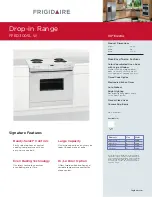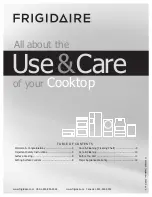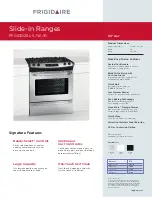
2
Safety Advice
❖
Do not use the instrument to heat inflammable
liquids
❖
Never lift or carry the instrument until it has
been switched off and allowed to cool for at
least 30 minutes. The hot warning light will
give guidance.
❖
The unit should be carried using both hands
with the fingers under the side edges.
❖
Never move or carry the unit with containers
on the top plate or while still connected to the
mains supply.
❖
There is a danger of liquid spillage if containers
are over-filled and stirred at high speed. Always
build stirrer speed slowly and never stir more
rapidly than necessary.
❖
NEVER place a cold glass vessel onto a hotplate
which is already hot.
Cleaning and Care
Before attempting cleaning:-
Ensure that the top is cool, disconnect from the
mains electricity supply.
The metal casing should be cleaned using a
damp cloth and a mild detergent solution.
Ceramic top units:
A damp cloth will normally remove most types of
contamination. For more difficult stains a
domestic cream cleanser is recommended.
Cleaning is made easier if spillages are attended
to promptly. In any case, spillages of alkali,
phosphoric acid and hydrofluoric acid MUST be
removed immediately as these chemicals can
attack and damage the glass ceramic. Ensure that
the appropriate safety precautions are observed.
During cleaning and general operation take care
not to scratch the surface of the top plate as this
could result in subsequent thermal breakage.
WARNING: A ceramic top which is scratched,
chipped, chemically etched or damaged must not
be used.
Metal top units:
The metal top plate should be cleaned using a
damp cloth and a mild detergent solution.
Cleaning is made easier if spillages are attended
to promptly. In any case, spillages of acids and
alkalis MUST be removed immediately as these
chemicals can attack and damage the the surface
of the aluminium alloy. Ensure that the
appropriate safety precautions are observed.
Preparation of Media
Take particular care when heating liquids having
a high viscosity. Viscous liquids can act as thermal
insulators and can cause thermal breakage of the
glassware. This is very important with media
solutions as the viscosity will usually increase as
the temperature rises.
❖
Check that the stirring action is sufficient to
agitate the whole of the liquid. Unstirred areas
in the liquid can result in uneven heat transfer
and “hot spots” in the glassware. This can
induce thermal stress and so cause failure.
❖
Check the stirring action regularly to ensure
that it remains adequate as the viscosity of the
solution increases.
❖
Always use the largest magnetic follower
possible and, if necessary, use a mechanical
overhead stirrer.
❖
Do not use glass vessels with thick walls, e.g.
Pyrex Heavy Duty Ware or standard beakers
and flasks having capacities of 5 litres or
greater.
❖
NEVER heat glass bottles on a hotplate.
❖
Ensure that the heat is built up slowly to avoid
localised overheating.
❖
Ensure the glassware is completely free from
scratches or other defects.
❖
Place the hotplate in a tray large enough to
contain the liquid in the event of glassware
failure.
❖
Wear the appropriate safety clothing - e.g.
gloves, goggles, protective apron etc.





































